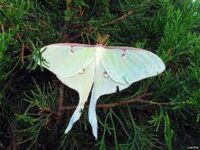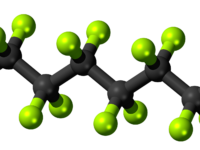The pink, squishy organ inside our heads is often considered the ultimate biological control center. There is no doubt that the brain is extraordinary, complex, and great at its difficult job of controlling organisms; however, it is not the only player in cognition. Instead, scientists are now realizing that other types of cells possess forms of intelligence as well.
Scientists are slowly starting to regard plants as intelligent organisms despite not having brains. They face challenges in nature the same way animals do — fulfilling basic energy and nutrient needs, avoiding predators, and reproducing, all while managing limited resources. To survive, plants have evolved strategies to achieve each of these tasks and continue to survive in dynamic environments. These discoveries are part of a larger emerging field called basal cognition, where pioneering scientists are noticing indicators of intelligence like memorization, learning, and problem-solving both within traditional brain structures and beyond them. Not all scientists are convinced though, sparking new debate about what it truly means to be intelligent.
Some of the proposed intelligent behaviors of plants include dynamic communication with neighboring plants and predators, as well as the ability to learn from past experiences and adapt their behavior accordingly. Stefano Mancuso, an Italian botanist and professor, told The Guardian simply that “intelligence is the ability to solve problems and plants are amazingly good in solving their problems.”
Plants like to keep tabs on their neighbors, using light and acoustic cues, mechanical stimuli, and sensing airborne volatile organic compounds. Plants synthesize and emit these compounds constantly, which effectively conveys information about their current conditions to nearby receiving plants and helps them form communities. A 2019 study from the Swedish University of Agricultural Sciences on this phenomenon found that these compounds were the primary way trees identified their neighbors since other cues such as light blocked by another tree, a branch touching a neighbor, or the sound of leaves rustling nearby aren’t as reliable.
In response to changing stimuli from their environments and neighbors, plants react accordingly in the form of physiological changes with the ultimate goal of optimizing their performance. The research shows that plants can make intelligent decisions to utilize resources most effectively and ensure their survival. They can also sense when their neighbors are under attack and turn on their own defense mechanisms. Often, they release toxic chemicals in their leaves, sending a strong message to predators to leave them alone.
Plants also seem to have the ability to hold onto memories and learn from past experiences. One group of researchers from the University of Western Australia applied behavioral techniques typically used with animals to the touch-me-not plant known for folding its leaves in response to physical disturbances. The researchers specifically studied if the plant was able to form habits, essentially testing if the plants would learn that their repeated stimuli were non-threatening.
In the study, the plants were dropped onto foam platforms, initially closing their leaves in response. After repeated exposure to this, though, the plants stopped recoiling as they got used to the stimulus. Then the scientists left the plants alone for a month, and when they dropped the plants again, the touch-me-nots were still unphased, signaling that they remembered their past experience. Biologically, this makes sense, as plants don’t want to waste energy on defense mechanisms if there is no real harm.
So, how exactly do plants demonstrate these clever techniques without a nervous system to orchestrate them? It turns out that a lot of these behaviors boil down to bioelectricity, which allows cells to store information and memories through voltage gradients. It’s what Mancuso has spent the past 20 years exploring in his research.
“The neuron is not a miracle cell, it’s a normal cell that is able to produce an electrical signal,” he told The Guardian. “In plants, almost every cell is able to do that.”
Rather than relying on one single control center, plants disperse their intelligent capabilities throughout their bodies, making them more versatile in the face of harm. “This is why plants have no brain — not because they are not intelligent, but because they would be vulnerable,” Mancuso told The Guardian. As a result, plants can lose up to 90% of their biomass and still survive. Humans can’t even afford to lose one-hundredth of a percent of their most important organs, like the parts of the brain stem that control functions like breathing and the heartbeat.
However, Mancuso’s pioneering ideas are still radical for many scientists. Skeptics argue that since plants do not have nerves and cannot make truly conscious decisions, they cannot accurately be classified as intelligent. Mancuso believes that the vast differences between humans and plants make it difficult for us to put ourselves in their shoes. Plants operate on a much slower time scale than humans, creating the perception of them as passive. Even though they are indeed reacting to outside stimuli, it’s difficult for humans to notice and appreciate it.
“It was ultimately Darwin’s own work that showed plant and animal intelligence are as intimately related as he intuited, highlighting the evolution of life and the parallel evolution of scientific thought.”
Mancuso and other present-day researchers are not the only ones to have explored the intelligence of plants — Charles Darwin himself was interested in this phenomenon in the 1800s. Darwin was one of the first believers in plant intelligence after recognizing that plants can react to sensation. He even once described how a plant’s root tip “acts like the brain of one of the lower animals.”
Now, over a century after Darwin, studies are finding that animal brains likely evolved from clumps of regular cells that got good at collaborating to orchestrate biological tasks, eventually forming the optimized, complex neurological system we know today. There is even evidence that basic aspects of cognition can be observed in the behavior of bacteria, hinting that a molecular infrastructure for intelligence existed long before neurons, brains, and complex central nervous systems. It was ultimately Darwin’s own work that showed plant and animal intelligence are as intimately related as he intuited, highlighting the evolution of life and the parallel evolution of scientific thought.






